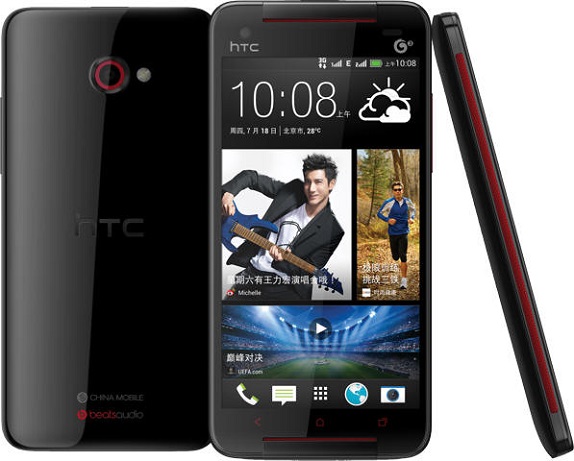While the original HTC Butterfly was a very nice phablet in its own right, it was never quite a popular device. The fault lies mainly on the part of HTC: the phone was sold to limited markets, it was not marketed enough and the selling price was quite high. It looked that HTC’s strategy from the start has always been to put all its effort in the marketing and selling of the HTC One, which was released not long after the HTC Butterfly.
Now that the HTC One has been out for a few months and selling very well, the company has recently announced the availability of the HTC Butterfly S. The Butterfly S comes with a 5 inch display, just like its predecessor. The display is therefore 0.3 inches larger than that of the HTC One – an advantage in the eyes of some and a disadvantage to those who prefer smaller screens. However, as far as I am concerned, the larger screen is an advantage. The screen is capable of 1080 x 1920 pixel resolutions, just like the HTC One, with a 441 ppi pixel density.
Having dimensions of 144.5 x 70.5 x 10.6 mm (5.69 x 2.78 x 0.42 inches) and weighing 160g, it can come to a surprise that the second generation Butterfly is slightly larger and heavier than the original Butterfly. However there are two main reasons for this: the addition of a second speaker on the front of the phone and a larger battery.
As a matter of fact, the Butterfly S comes with a 3200 mAh battery, which is not removable. As expected, such a large battery gives impressive results and as per GSM Arena’s Butterfly S battery endurance test, the battery rated significantly higher than the Samsung Galaxy S4 battery endurance score.
Benchmark tests have shown that the Butterfly S is slightly faster than the HTC One and about as fast as the Samsung Galaxy S4. The Butterfly S runs on the Qualcomm APQ8064T Snapdragon 600 chipset. Inside the smartphone one will find a quad-core 1.9 GHz Krait 300 processor, an Adreno 320 graphics processing unit and 2 GB of RAM. The new phablet has 16GB of internal memory, which can be expanded by a further 64GB by inserting a microSD card. This is definitely a plus over the HTC One, which does not possess a microSD card slot.

The primary camera supports 4 megapixels and resolutions of 2688 x 1520 pixels. While the lens is the same as that on the HTC One, it does not include image stabilization, a useful feature that is found on the HTC One. Video recording is carried out as 1080p@30fps.
Camera features include LED flash, autofocus, high dynamic range imaging (HDR), face and smile detection, geo-tagging and simultaneous HD video and image recording. When one considers that fact that Samsung, Sony and other manufacturers already use 13 MP cameras on their high end smartphones, it seems that HTC still have to catch its competitors on this regards. The secondary camera comes with a 2.1 MP lens.
The Butterfly S runs on Jelly Bean version 4.2.2, which is the latest Android OS at the time of writing. Useful features on this Android phablet include an FM radio with RDS, NFC and infrared ports as well as compass, gyro, accelerometer and proximity sensors.
To conclude I must say that the Butterfly S is an impressive device from HTC. Some people might prefer it to the HTC One due to the faster processor, the bigger screen and the microSD card slot. Having said this it does not look as nice as the HTC One and its beautiful aluminium body, but for some people this might only be a minor detail. The Butterfly S sells about US $770, which is equivalent to GBP 495 or EUR 580.

